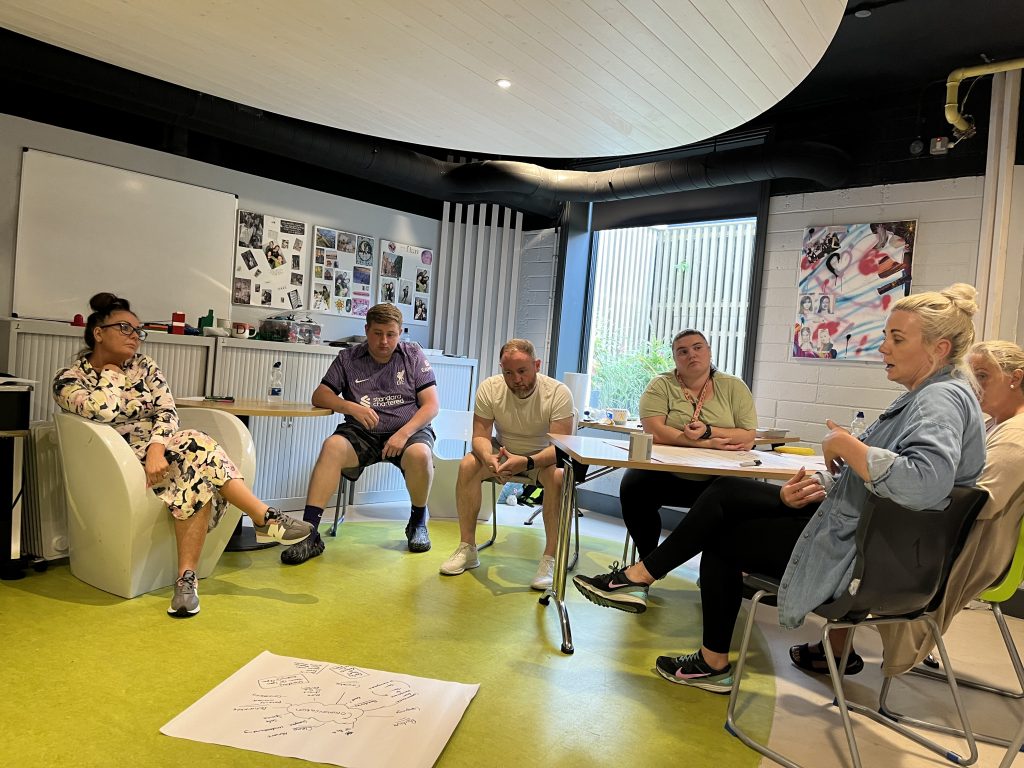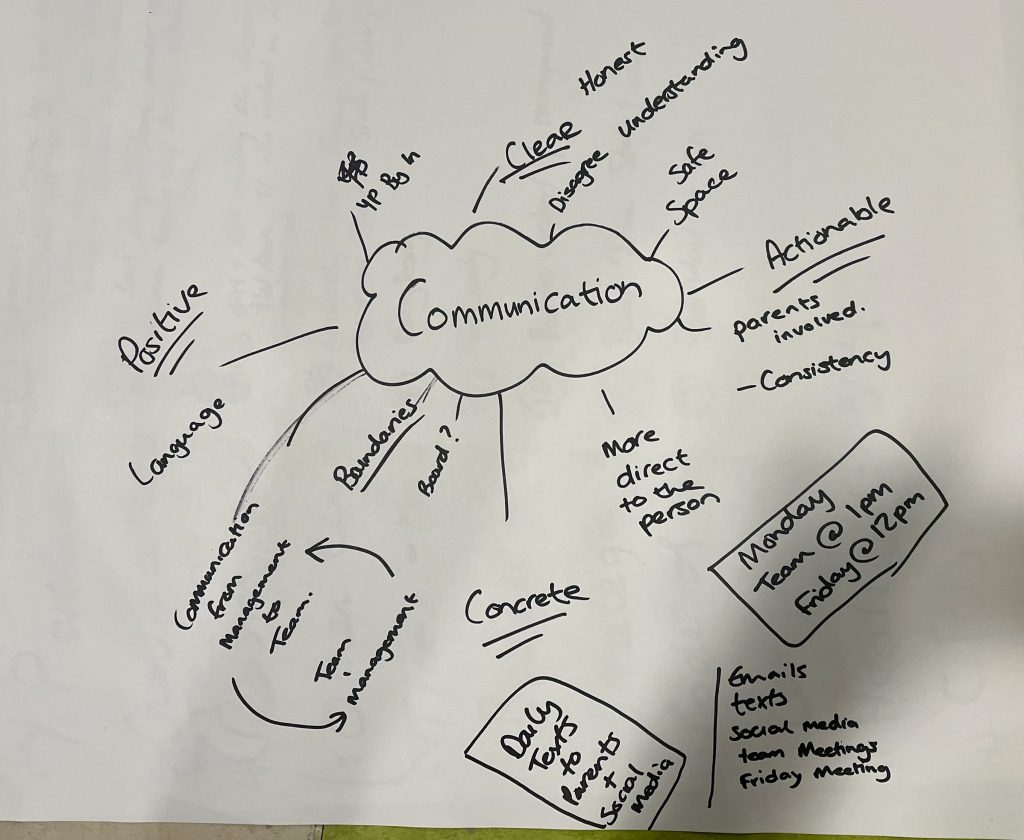This piece was compiled following interviews with the staff, informal chats, observations and more formal restorative circles.
In our overview of the implementation process, among others, we highlighted one challenge: two years into the implementation, approximately half of the staff was not entirely buying into the restorative mindset – which is perfectly understandable. We noted that the implementation was perceived as a top-down process and that there was a lack of consensus on what a restorative approach implied.
In the past few months, we focused on improving the buy-in and finding consensual ways of working together.
First, it is important to note that there is a paradox: restorative practice promotes voluntarism. When an organisation decides to implement RP, some staff members may disagree with the approach. In the spirit of RP, imposing the approach doesn’t seem appropriate: one cannot force someone to become restorative, and “resisters” need to be heard and treated restoratively. At the same time, consistency is critical, especially when working with young people: gaps in practices and approaches can create discomfort, lack of safety or even chaos for young people and youth workers.
So, what can be done to improve the buy-in?
– First, while the coordinator was in place, his primary strategy was to model RP as much as he could by actively building positive relationships with everyone, checking in, listening to concerns, holding spaces to hear criticism and grievance, repairing relationships when they were broken, by running restorative meetings and circles, being accountable for his own mistakes and so on. It did have a really positive impact, and some staff members acknowledged it changed their mindset.
– Discussions and communities of practices allow us to unpack what prevents some people from entirely buying in and being accountable for their actions. It appeared it often reverts around a legitimately perceived lack of safety: the fear that a restorative approach would allow young people or other staff members to get away with mistakes or harm done with no consequences or the fear that restorative meetings were not safe spaces to engage with someone who has hurt you. This is progressively addressed by practice, modelling, and regularly assessing if people feel safe enough to speak honestly in the circle.

– Following the BYC RP Implementation report in March 2023, it was recognised that RP was understood differently among the staff: some saw RP as a set of tools, others as a mindset and a philosophy. It is a familiar dichotomy among practitioners: when using “RP” as a tool, there is a risk of coming back to more traditional/punitive approaches if it “does not work” (and sometimes it just means if the young person doesn’t meet the adult’s expectations). One way of building consensus was to be more careful with words and ways of describing RP. For example, we focused more on relationships, community and inclusivity than on RP. Another of our articles explains that relationships are at the core of youth work; after all, RP is primarily about building and repairing relationships to create inclusive communities. Presented like that, there is a natural fit between RP and youth work.
 – Lastly, four sessions were run with the staff to agree on ways of working together and making decisions. External facilitators facilitated them. The first two focused on agreeing on what adults expected from the young people and allowed the staff to draft a “Code of conduct” for Young People – it will be revised and agreed on by the Young People themselves in the youth councils. The idea is to ensure that adults have the same expectations to ensure consistency. It was followed by two sessions, organically facilitated, initially aiming at drafting a code of conduct for the staff and clarifying the club’s decision-making process – this process, as highlighted in the implementation report, could prevent conflicts. Interestingly, there was not enough time to complete the code. Still, the two sessions offered a precious, safe space for staff to agree on new ways of working together and being on the same page while addressing issues and reconnecting with each other beyond past grievances. It is a good reminder that when it comes to RP, creating a safe space can lead to powerful unplanned outcomes and is as important as the planned result of a meeting.
– Lastly, four sessions were run with the staff to agree on ways of working together and making decisions. External facilitators facilitated them. The first two focused on agreeing on what adults expected from the young people and allowed the staff to draft a “Code of conduct” for Young People – it will be revised and agreed on by the Young People themselves in the youth councils. The idea is to ensure that adults have the same expectations to ensure consistency. It was followed by two sessions, organically facilitated, initially aiming at drafting a code of conduct for the staff and clarifying the club’s decision-making process – this process, as highlighted in the implementation report, could prevent conflicts. Interestingly, there was not enough time to complete the code. Still, the two sessions offered a precious, safe space for staff to agree on new ways of working together and being on the same page while addressing issues and reconnecting with each other beyond past grievances. It is a good reminder that when it comes to RP, creating a safe space can lead to powerful unplanned outcomes and is as important as the planned result of a meeting.

